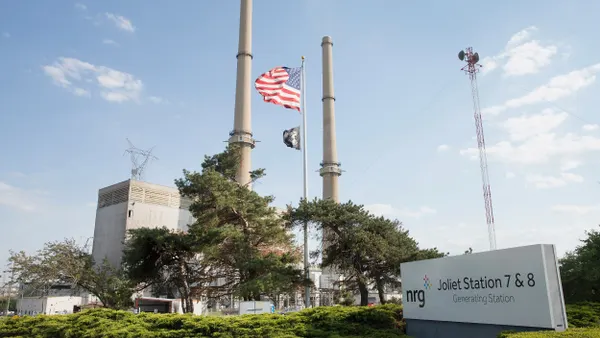Dive Brief:
- The EPA this week proposed tougher rules on smog-causing emissions that float across state lines, while on Capitol Hill, Senate Republicans moved to roll back another one of the agency's signature regulatory packages.
- On Tuesday, the EPA incorporated its 2008 national ozone standards into the cross-state air pollution rule (CSAPR), Law360 reports, requiring 23 states to reduce nitrogen oxide emissions that float into neighboring states, diminishing their air quality. The agency also proposed to remove South Carolina and Florida from the rules, saying they don't contribute significant emissions to other states.
- The day after the EPA's move, the U.S. Senate voted 52-46 to stop the Clean Power Plan, President Obama's central climate regulation, in an effort led by coal-producing states. Obama has vowed to veto the bill if it reaches his desk.
Dive Insight:
States that don't meet the 2008 ozone standards have until 2018 to comply with the updated CSAPR, according to Law360, and can comply by having power plants update existing pollution controls, install new ones, or switch to cleaner generation sources.
The CSAPR proposal would update the regulatory package to include federal implementation plans for states whose nitrogen oxide emissions make it more difficult for their neighbors to meet the 2008 ozone standard of 75 parts per billion (ppb).
The CSAPR was resurrected by the Supreme Court last year after the D.C. Circuit rejected it, and the agency said the update would cut summer emissions from power plants in the eastern part of the country by 85,000 tons compared to business-as-usual projections. That translates to annual public health benefits of $1.3 billion, the agency said, significantly more than the projected annual compliance cost of $93 million.
The agency included only eastern states in this CSAPR update, Law360 ntoes, but will take comment on including western states as well.
The update to the CSAPR comes as part of a trend of increasing emissions regulation of the power sector in President Obama's second term. In addition to its landmark Clean Power Plan, which seeks to cut power sector carbon emissions by 32% by 2030, the EPA has proposed tougher ozone requirements for new power plants, lowering the acceptable ozone air quality level to 70 ppb. It also targeted mercury emissions in its MATS rule, vacated by the Supreme Court earlier this year but expected to survive by many legal analysts.
That focus on climate change regulation has put the agency on the wrong side of Republicans and coal-producing states. A day after the CSAPR update, the Senate passed a bill to stop the Clean Power Plan, while Majority Leader Mitch McConnell (R-KY) has urged states to "just say no" to complying with the plan.
President Obama, however, has vowed to veto any bill undoing the Clean Power Plan, and most of the 27 states challenging the plan in court are also mulling plans for how to comply with it. The regulatory package's fate is expected to be decided at the Supreme Court.













